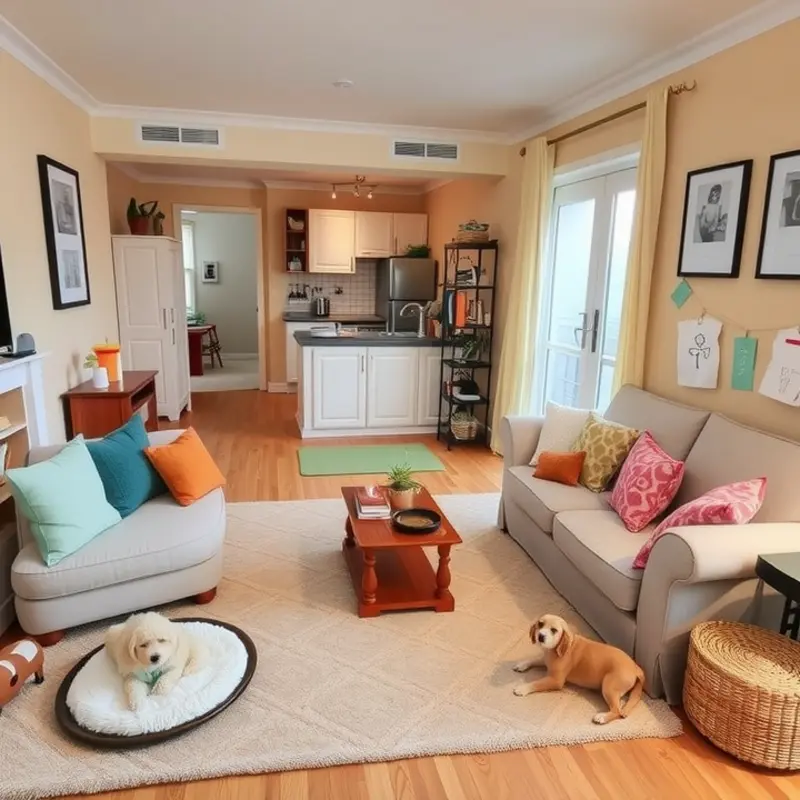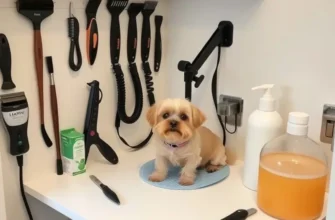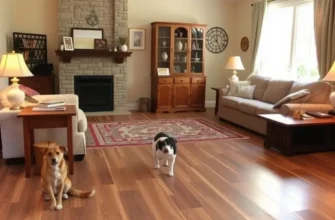Living in an apartment with pets can be a joyful experience, especially for families, couples, and renters who want to share their lives with furry companions. Ensuring that your living environment remains peaceful and comfortable for both pets and children requires a proactive approach to pet training. The following tips and techniques will help you establish positive behaviors in your pets while maintaining a safe, organized, and kid-friendly apartment. By focusing on proper training, you’ll create an environment where everyone feels at home, reducing stress and potential issues. Let’s explore the basic principles of apartment pet training that will help cultivate a loving atmosphere for your family and your pets.
Establishing a Safe Environment for Pets and Kids

Creating a harmonious living space for both pets and children involves a thoughtful approach to safety and comfort. Begin by inventorying your space to identify potential hazards. Look for sharp edges on furniture or decor that could pose a danger to both pets and children. Consider using corner guards or moving such items to less accessible areas.
Breakable items should be relocated to higher shelves or secured behind cabinet doors. Similarly, toxic plants, although beautiful, might need to be placed out of reach or replaced with non-toxic alternatives that are safe if nibbled upon by a curious child or pet.
Next, select durable fabrics for your furnishings. When choosing furniture, opt for materials like microfiber or synthetic fibers. These fabrics resist stains and are easier to clean, which is crucial with little ones and furry companions sharing the space. Slipcovers provide another layer of protection and can be easily washed or replaced.
Establishing a pet zone involves designing a dedicated area where your pet feels secure and comfortable. This could be a corner of a room furnished with a cozy bed, a selection of favorite toys, and perhaps a blanket that can be quickly washed. Such zones not only provide a safe haven for pets but also help contain potential messes, making it simpler to maintain overall cleanliness and order in the apartment.
For children, ensure their play areas are distinct yet not off-limits to pets. Child-proof play areas by using baby gates where necessary to establish boundaries. This helps keep their toys and belongings safe from being chewed or misplaced. It’s critical these areas are still accessible to pets under supervision to promote harmonious coexistence.
Lastly, it’s vital to establish pet-friendly indoor activities to keep them engaged and reduce stress. Consider visiting pet-friendly indoor activities for ideas that keep pets entertained indoors, especially when outdoor activities are not feasible.
By focusing on these key areas, you can craft an apartment environment that’s enjoyable and safe for everyone, promoting peace and harmony within your shared living space.
Effective Training Techniques for Apartment Living

Once your living space is pet-friendly, the next step is implementing effective training techniques that fit your apartment lifestyle. This chapter delves into training fundamentals, focusing on methods that help pets adjust to urban living with ease.
Positive Reinforcement is the cornerstone of effective pet training in an apartment setting. By using treats and praise to amplify desirable behaviors, you not only encourage your pet to remain calm and responsive but also strengthen the bond you share. This method relies on rewarding your pet when they exhibit positive behaviors such as approaching you when called or sitting quietly during downtime. Consistent rewards instill a sense of security and confidence in your pet, making them more adaptable to the nuances of apartment living.
Consistent Commands are critical in teaching your pet the rules of their new environment. Pets thrive on routines, and using clear, consistent commands helps establish those routines. Whether it’s “sit,” “stay,” or “leave it,” the key is repetition. Use simple one- or two-word commands and maintain the same tone to avoid confusion. Repetition over time helps solidify these behaviors, facilitating a smooth transition to a busy living atmosphere. It’s important for all family members to use the same commands to prevent mixed signals.
Short Training Sessions suit the attention span of most pets and eliminate overwhelm. Frequent, brief training periods — such as five to ten minutes several times a day — are more productive than extended sessions. These mini-sessions allow your pet to stay focused and enthusiastic about learning. Furthermore, integrating training into daily routines, like a session after a walk or before dinner, helps engrain these behaviors more naturally into your pet’s daily life.
In an urban environment, it’s essential to Manage Noise and Socialization effectively. Living in close quarters inevitably means more exposure to various noises. Gradually introduce your pet to different sounds by playing recordings or exposing them in controlled environments. Pair these sounds with positive reinforcement to build positive associations. Moreover, ensure your pet has positive experiences in communal areas. Encourage gentle interactions with neighbors and other pets to help your pet develop social skills necessary for harmonious living.
Apartment living also means prioritizing pet-friendly activities that suit indoor environments. Consider engaging in activities that stimulate your pet both mentally and physically within your apartment. Explore pet-friendly indoor activities for ideas to keep your pet occupied and content indoors.
By incorporating these training techniques into your routine, you create a structured environment that caters to your pet’s needs and helps them adapt more easily to apartment living. Whether it’s through consistent commands, short training bursts, or effective socialization, these strategies ensure a harmonious balance between your living experience and your pet’s well-being.
Final words
Creating a harmonious living environment in an apartment with pets is achievable with the right mindset and strategies. By ensuring safety and adopting effective training techniques, you lay the groundwork for a happy home that caters to both pets and children. Remember that patience and consistency are at the heart of successful pet training. With the tools and tips provided, you can create a nurturing environment where pets thrive and families bond, making unforgettable memories together. Embrace the joy of sharing your apartment with your furry companions!









